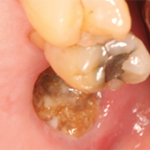NEW YORK (Reuters Health)—Switching women with rheumatoid arthritis (RA) from oral bisphosphonates to teriparatide increases bone mineral density (BMD) and trabecular bone score, according to a new report. Researchers in Japan conducted an 18-month observational study of more than 175 women with RA (mean age: 66) who remained on oral bisphosphonates, switched to denosumab (DMAb),…
Search results for: denosumab

Rheumatology Drug Updates: Opana ER Painkiller Pulled from U.S. Market; Upadacitinib to Treat RA, and More
Opana ER Pulled from U.S. Market Last month, the U.S. Food and Drug Administration (FDA) asked Endo Pharmaceuticals to remove oxymorphone hydrochloride extended release (Opana ER) from the U.S. market due to public health consequences related to abuse. The agency has concerns that the risks presented by the treatment do not outweigh its benefits.1 On…
Insufficient Evidence Regarding Osteoporosis Medications in Kidney Patients
NEW YORK (Reuters Health)—There are insufficient data to make evidence-based decisions regarding the benefits and harms of osteoporosis medications in patients with chronic kidney disease (CKD), according to a systematic review and meta-analysis. “We found low to moderate evidence for the effects of some but not all of the medications, and the evidence was limited…

A New Approach to Fracture Prevention
Glucocorticoids are widely prescribed by rheumatologists, and the effects of daily and cumulative doses of these drugs on bone mineral density (BMD) are important elements of a draft clinical guideline document presented on Nov. 13 at the 2016 ACR/ARHP Annual Meeting in Washington, D.C. Leaders of the ACR guideline project discussed their recommendations at the…

Proton Pump Inhibitor Use May Be Linked to Bone Mineral Density
The use of proton pump inhibitors may lead to changes in bone mineral density and an increased risk of developing osteoporosis…
Combination Therapy Bests Monotherapy in Severe Postmenopausal Osteoporosis
NEW YORK (Reuters Health)—The combination of denosumab and teriparatide improves bone microarchitecture and estimated strength more than either drug alone in women with severe postmenopausal osteoporosis, researchers have found. Dr. Joy Tsai, from Massachusetts General Hospital in Boston, and colleagues conducted a single-site, two-year, open-label, randomized controlled trial involving 94 women aged 45 or older…

2015 ACR/ARHP Annual Meeting: Research Lends Insight Into Osteoporosis Treatment, New Auto-Inflammatory Disease, Scleroderma
SAN FRANCISCO—Post-menopausal women with osteoporosis, previously treated with oral bisphosphonates, had greater increases in bone density when taking denosumab compared with zoledronic acid over a year’s time, according to a study presented at the 2015 ACR/ARHP Annual Meeting. The findings were discussed in the Discovery 2015 plenary session, which focused on new research. In the…

The ACR Addresses the FDA about the Safe Adoption of Biosimilars in the U.S.; Plus Tofacitinib Approved for RA & Romosozumab May Reduce Fracture Risk
The ACR has continued its advocacy to ensure the safe adoption of biosimilars in the U.S., most recently addressing an FDA public hearing. Also, the FDA has approved tofacitinib for RA, and a clinical trial of romosozumab for patients with osteoporosis met its primary endpoint…

Diagnosis, Management of Medication-Induced Osteonecrosis of the Bone
Prior to the widespread use of bisphosphonates for the management of osteoporosis, multiple myeloma and metastatic cancer to the skeletal system, osteonecrosis of the jawbones was an infrequent condition seen after radiation for oral cancers (osteoradionecrosis) and in chronic odontogenic infections.1 Since the mid-2000s, osteonecrosis of the jawbones has been noted to occur as a…
Growth Hormone Reduces Fractures in Women with Osteoporosis
NEW YORK (Reuters Health)—Growth hormone is associated with a decrease in fractures in women with postmenopausal osteoporosis even a decade after treatment ceases, researchers from Sweden report. “We were surprised and pleased to find that the patients had a reduced risk of fracture so many years after the growth hormone treatment was ceased,” Dr. Emily…
- « Previous Page
- 1
- …
- 5
- 6
- 7
- 8
- 9
- 10
- Next Page »